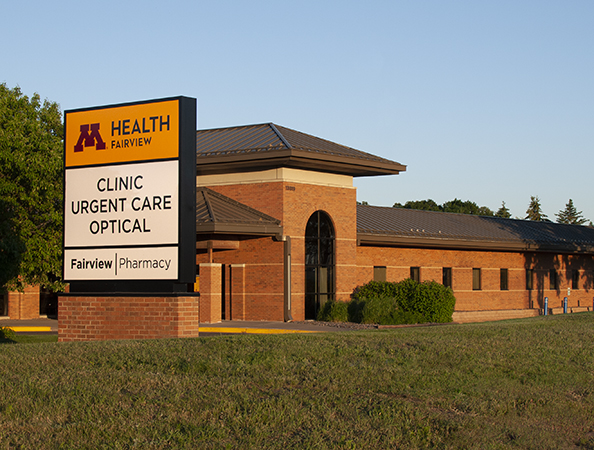Crucial Services Supplied by Clinics Specializing in Urgent Care
Wiki Article
Comprehending the Duty of Urgent Treatment in Offering Timely Treatment for Non-Life-Threatening Conditions
Immediate care facilities have emerged as an important component of the health care landscape, dealing with the immediate demands of clients with non-life-threatening conditions. By supplying timely and easily accessible clinical solutions, these centers efficiently link the gap in between health care and emergency divisions. Nevertheless, the implications of their function extend past simple comfort, prompting a closer examination of when and exactly how these facilities are utilized. Understanding the nuances of immediate care can considerably impact client results and the overall effectiveness of health care distribution. What factors add to their expanding importance in contemporary medicine?What Is Urgent Care?
Immediate care describes a classification of medical solutions developed to attend to non-life-threatening problems that need instant focus. These facilities work as an intermediary between health care medical professionals and emergency spaces, using a hassle-free option for clients that need timely care without the considerable waiting times usually connected with emergency situation divisions.Immediate care facilities are typically staffed by doctor, consisting of physicians, nurse specialists, and medical professional assistants, who are trained to diagnose and deal with a vast array of problems. Common services provided by these facilities include treatment for small injuries, health problems, and infections, as well as diagnostic examinations such as X-rays and lab job.
Furthermore, immediate care facilities often accept walk-in patients, removing the need for consultations. Overall, urgent care plays a vital function in the medical care system, guaranteeing clients can access essential medical services promptly and efficiently.

When to seek treatment at an immediate treatment center instead of a primary care doctor or an emergency situation area,Numerous people might discover themselves unsure concerning. Immediate care is developed to resolve non-life-threatening conditions that require punctual focus however are not serious enough to necessitate an emergency clinic visit.
Typically, one must think about urgent care for issues such as minor fractures, sprains, cuts needing stitches, or infections like urinary system system infections. In addition, chilly or flu symptoms, breakouts, and allergic responses can additionally be properly handled in this setting.
It is necessary to note that immediate treatment is not suitable for life-threatening emergency situations, such as upper body discomfort, difficulty breathing, or severe blood loss, which necessitate instant emergency clinic treatment.
Individuals who do not have access to a health care physician or can not safeguard a prompt appointment might also take advantage of urgent care solutions. Ultimately, understanding when to use urgent care can result in more efficient healthcare distribution, permitting individuals to get the suitable level of treatment based upon their certain health needs.
Advantages of Urgent Treatment Centers
Selecting urgent care facilities for non-life-threatening problems provides several advantages that boost individual experience and access. One key benefit is the minimized delay times contrasted to traditional emergency clinic. Urgent care centers commonly run on a first-come, first-served basis, permitting individuals to receive prompt medical focus without check this the long hold-ups frequently related to hospital settings.Additionally, immediate care centers supply prolonged hours, including weekends and evenings, accommodating patients with differing routines. This flexibility guarantees that people can seek care when it is most convenient for them, further promoting prompt intervention.

Additionally, these centers often offer a detailed variety of services, consisting of minor procedures and analysis tests, all under one roof covering. This debt consolidation of solutions not only enhances the patient experience however likewise cultivates an extra cohesive method to taking care of non-life-threatening health issues, eventually profiting overall patient outcomes.
Typical Conditions Treated
At immediate treatment centers, a variety of non-life-threatening problems can be efficiently dealt with, supplying patients with available and timely medical support. These facilities are specifically skilled at addressing concerns that need punctual focus but do not position an immediate threat to life or arm or leg.Typical problems dealt with at urgent care facilities consist of minor injuries such as strains, strains, and cracks. Urgent care centers are geared up to execute necessary analysis examinations, such as X-rays and laboratory examinations, enabling them to supply thorough care.
Furthermore, immediate treatment suppliers can administer vaccinations, assisting to prevent the spread of transmittable diseases - Urgent Care. They additionally use services for minor treatments, such as suturing wounds or draining pipes abscesses. By offering these diverse solutions, urgent care centers play a crucial duty in connecting the void in between medical care and emergency solutions, ensuring people get timely therapy for a wide variety of conditions without the demand their website for lengthy delay times commonly connected with emergency situation spaces
Exactly How Urgent Care Supports Healthcare System
Urgent treatment centers play a critical role in sustaining the overall healthcare system by easing the worry on emergency situation divisions and supplying timely access to healthcare for non-life-threatening problems. By dealing with instances such as minor injuries, infections, and diseases, urgent care centers allow emergency divisions to concentrate on more essential people requiring immediate attention.In addition, urgent treatment facilities enhance healthcare accessibility, providing extensive hours and an easier option to standard medical care settings. This access is specifically beneficial for people who may not have a regular medical professional or who need immediate treatment beyond typical office hours. Because of this, immediate care facilities successfully reduce enhance and wait times individual fulfillment.
Furthermore, immediate treatment facilities add to set you back savings for both pop over here people and the healthcare system by supplying lower-cost solutions contrasted to emergency divisions. This financial efficiency is vital in a period of climbing medical care costs, allowing clients to get required treatment without incurring exorbitant costs.
Conclusion
To conclude, urgent care facilities play a vital function in the health care system by delivering prompt therapy for non-life-threatening problems. By connecting the gap in between medical care and emergency clinic, these centers make sure that people obtain timely clinical interest without the extensive delay times usually connected with emergency departments. The ease of access and effectiveness of immediate treatment centers contribute significantly to alleviating the general concern on medical care sources, boosting individual results, and advertising an extra efficient healthcare shipment system.Immediate care centers have arised as an important component of the healthcare landscape, addressing the instant requirements of clients with non-life-threatening problems. Urgent treatment brows through usually incur lower out-of-pocket costs contrasted to emergency situation department visits, making care much more budget friendly for individuals without compromising high quality. Urgent treatment facilities are geared up to perform essential diagnostic tests, such as X-rays and laboratory examinations, enabling them to give comprehensive care.
By supplying these diverse solutions, immediate care centers play an essential function in bridging the gap between primary treatment and emergency situation services, making certain people get prompt treatment for a broad array of conditions without the requirement for long delay times generally linked with emergency situation areas.
Furthermore, immediate treatment facilities improve healthcare access, providing prolonged hours and a much more convenient alternative to conventional primary treatment setups.
Report this wiki page